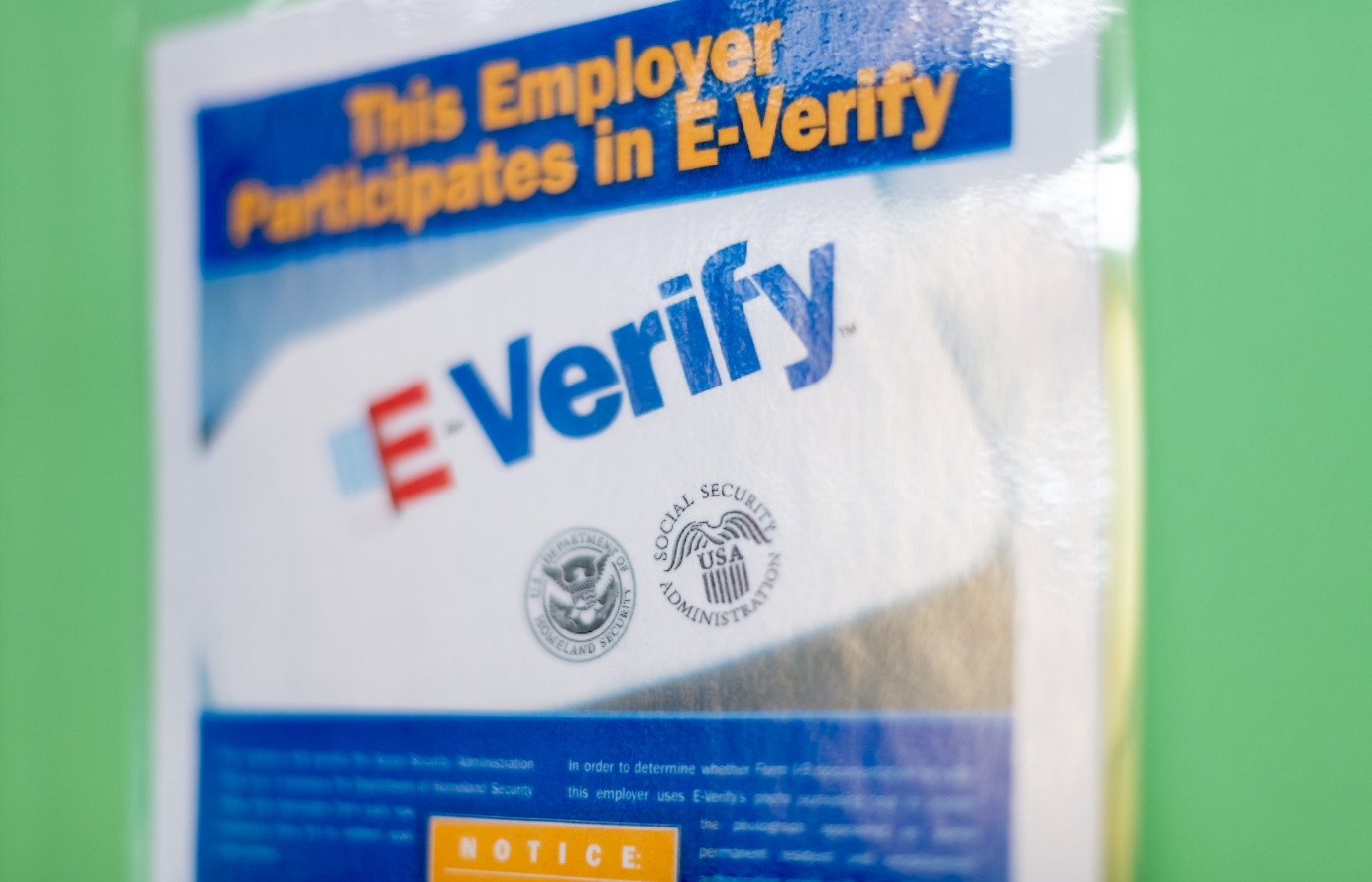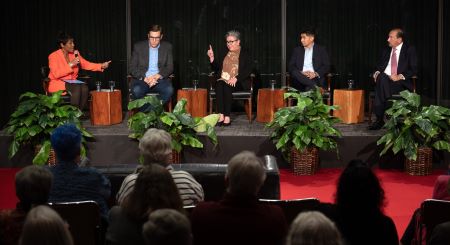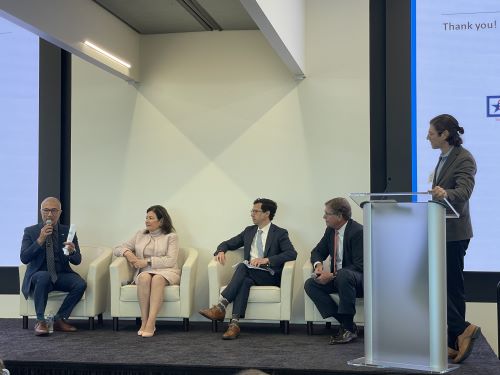Mexican President AMLO Proposes New Guest Worker Visa Based on the Bracero Program
President Biden and Mexican President Andres Manuel Lopez Obrador (AMLO) spoke Monday about immigration and other topics. AMLO proposed that the United States and Mexico partner to create a new guest worker visa program to allow Mexicans and Central Americans to lawfully work in the United States. According to reports, AMLO proposes that such a program should be 600,000 to 800,000 annually.
This proposed program would be based on the Bracero program, according to AMLO. Bracero was the nickname for a temporary guest worker visa program that allowed Mexican farm workers to work temporarily in the United States. The Bracero program began with a bilateral agreement between the United States and Mexico in 1942 as the U.S. draft and war mobilization greatly reduced the supply of labor for lower marginal product occupations like agriculture. It ended in 1964 after lobbying from labor unions.
As a bilateral agreement, the Mexican government regulated emigration on its side and the United States government regulated the in-migration on its side. Both sides regulated the migrant’s wages, duration of employment, age of workers, health care, and transportation from Mexico to U.S. farms. Employers sold transportation, housing, and meals to the migrants for a low price. Employers also had to deduct ten percent of the migrant’s wages from their paychecks and deposit them in an account that would be turned over to migrants once they returned to Mexico. The deduction ensured compliance with the rules of the program and at the insistence of the Mexican government so the migrants would return.
The Bracero program did not limit the number of Mexican migratory workers so long as the government’s conditions were met. As a result, nearly five million Mexican workers used the Bracero program from 1942, when the first group of 500 braceros arrived at a farm in California until the program’s cancellation in 1964. During the early phase of the program during World War 2, the United States government acted as the arbiter and distributor of the Mexican workers to American farms – heavily subsidizing the movement and not requiring total reimbursement for government expenses on medical and security screenings.
The Bracero program became more rigid and regulated in the late 1940s. As a result, Mexican illegal immigrants began to enter in large numbers to work on American farms after the war. By 1952, there were approximately 2 million Mexican illegal immigrant workers in the United States. In 1951 and 1952, the U.S. government began two major reforms to the Bracero program: The first was to make sure that American farmers could hire as many Bracero guest workers as they demanded. The second was to make sure that any Mexican workers who wanted to work on U.S. farms were able to do so legally.
To the credit of the Border Patrol and Immigration and Naturalization Service (INS) at the time, they listened to the complaints of employers and tried to design their enforcement and visa programs to work with economics rather than against it. INS Commissioner Joseph Swing noted that in the late 1940s and early 1950s, employers in the Rio Grande Valley referred to the Border Patrol as a “Gestapo outfit” that wrenched their willing illegal workers away from employment. Swing realized that he would have to enlist the cooperation of employers and migrants to solve the problem. In other words, he would have to address both the supply of illegal immigrant workers and the demand for them.
Swing said, “If there is any employer who cannot get legal labor all he has to do is let either the Department of Labor or Immigration know and we will see that he gets it . . . I am quite emphatic about this because I know I am going to run into some opposition in Southern Texas.” And he followed through on his promises. The Bracero program’s flexibility increased over time as the Border Patrol and INS realized that the Bracero program was an indispensable component of reducing illegal immigration by providing a lawful means of migration to substitute for illegal immigration.
The Bracero program was astonishingly successful at reducing illegal immigration. The number of apprehensions of illegal immigrants, a proxy measurement for the illegal immigrant flow, dropped consistently as the number of guest worker visas increased (Figure 1). Illegal immigration rose and fell over that time in response to economic conditions and enforcement on both sides of the border, but the number of visas available did more than any other factor to reduce the flow. During the mid-1950s, when the number of Bracero guest worker visas increased the most, each new visa displaced about three illegal immigrant entries by pushing them into the legal market. Shortly after the Bracero program ended in 1964, the number of illegal immigrants increased rapidly because American employers still demanded their services.
In addition to granting Bracero guest worker visas to new Mexican migrants, the INS and Border Patrol also gave them to illegal Mexican immigrants already present in the United States. Border Patrol and INS agents would often arrest illegal immigrant workers and give them a “spot legalization” at their employment sites, recording their identity information and handing them a work permit. Other times, the officers would arrest the illegal immigrants, drive him down to the border, and make them take one step across the border and come back in as a legal bracero worker, a process referred to as “a walk-around the statute.” Both spot legalizations and walk-around the statute were part of the euphemistically labeled process of “drying out” the illegal immigrants by legalizing them, a reference to the then-common racist term “wetback” to describe illegal Mexican immigrants.
In combination with the legalization of Mexican workers and the increased and deregulated visa for new entries, the U.S. government also increased enforcement through Operation Wetback. That enforcement operation was designed to identify and deport illegal immigrants in combination with granting many of them Bracero work visas. The goal of increasing the number of visas and enforcement at the same time was to exchange illegal workers for legal workers, in Swing’s words. He achieved that goal. For example, farmers during the 1953 harvest in the Rio Grande Valley only employed 700 legal guest workers compared to 50,326 legal guest workers employed there in 1954. At every opportunity, Swing praised farmers and gave them credit for substituting legal Bracero workers for illegal immigrant workers, saying the “accomplishment of this task would have been impossible without the generous cooperation extended to the effort by ranchers, farmers, and growers.”
The combination of a legal migration pathway with consequences for breaking immigration laws incentivized Mexican migrants to come legally and for U.S. farmers to eschew the black market. As a result, the number of removals of illegal immigrants in 1955 was barely three percent of the 1954 numbers. Those who previously would have entered unlawfully instead signed up to become Braceros and farmers who would have earlier hired illegal immigrant workers only hired legal migrants.
The INS made low cost for migrants to get guest worker visas and used the Border Patrol to funnel illegal migrants and would-be illegal migrants into the legal system. The immigration agencies sometimes liberalized the system even beyond what Congress intended through the legalizations and granting of border crossing cards. Increased lawful migration, flexibility, and enforcement funneled migrant workers into the Bracero program and reduced the illegal immigrant population by an estimated 90 percent and cross border flows by 95 percent. The existence of a legal visa for lower skilled Mexican migrants was essential to the decrease in illegal immigration as the INS and Border Patrol understood at the time.
Problems with the Bracero Program and New Challenges Today
Creating a new Bracero program today would reduce illegal immigration, increase border security, and help grow the economy on both sides of the border. But the Bracero program also had some serious problems that should be fixed with the creation of a Bracero-inspired program today. The first problem is corruption. The Bracero program was managed by both the Mexican and U.S. governments. On the Mexican side, there were problems with corruption as some government employees demanded bribes from Mexican Braceros in exchange for being approved for a work permit. Many migrants were so incensed by this that they tried to get Bracero work permits on their own, leading to scenes where U.S. Border Patrol agents were helping Mexican migrants enter the United States while facing down the opposition of Mexican police and military personnel who were trying to stop them from emigrating.
The second problem is portability. Compared to today’s H-2 visas, Braceros could move between employers easily. Still, any workers in a modern Bracero program must have as much portability as possible – preferably the same amount as native-born American workers. There are few serious violations in H-2 visa programs today, but those violations that do occur would likely vanish if workers could switch employers without facing regulatory barriers or losing their lawful status. After all, the best defense against an abusive employer is the employee’s ability to switch jobs.
The third major problem with the Bracero program was that it was only for agricultural workers. That may have been sufficient in the 1950s, but it won’t be good enough today. Only about 4 percent of illegal immigrants work in agriculture today while 8 percent work in transportation, 14 percent in production and maintenance, 16 percent in construction, and about one-third in services. Thus, any new visa would have to funnel migrants to the jobs where they would actually work rather than just agriculture.
The fourth major problem is that the current H-2 visa program is already very good at reducing illegal immigration from Mexico. The number of Mexican illegal immigrants is increasing since Title 42 closed the border and resulted in the immediate return of illegal immigrants to Mexico, but that will return back to pre-COVID numbers as soon as Title 42 is rescinded and the incentives faced by migrants return to normal. The major problem going forward is channeling Central Americans into the legal migration system by creating a visa for them. My colleague David Bier and I have proposed various ways to increase the number of visas for Central Americans without decreasing the number for Mexicans. AMLO wants more visas for Central Americans so they don’t travel illegally through Mexico anymore.
The fifth major problem is reciprocity. Not many Americans want to work in Mexico, but allowing them to on very easy and generous terms could convince some Americans that a new bilateral agreement based on the Bracero program is “fair.” Michelangelo Landgrave has researched the issue of migration reciprocity between the United States and Canada, with the finding that Americans support more Canadian immigration if there is reciprocity whereby Americans can also work in Canada. This approach should be incorporated into a bilateral agreement with Mexico that allows Americans to live, work, and invest in Mexico with very few legal barriers.
Everyone’s incentives are aligned to reduce illegal immigration by liberalizing immigration. Americans want to hire migrant workers, the Mexican government wants to make it easier for Central Americans to get U.S. work permits so they don’t cross Mexico illegally, and the end of the COVID border emergency would jumpstart Mexican temporary migration to its previously high levels. The only group with power that is not potentially interested is the Biden administration. The only major provision missing from President Biden’s U.S. Citizenship Act was a large and temporary guest worker visa program – let’s hope that was a temporary oversight.
It’s time for Democrats to bite the bullet, ignore complaints from their labor union allies, plug their ears to nativist complaints, and create a big temporary guest worker visa program to get control of the Mexican border. Enforcement alone will never do it, as the present situation shows. The border is practically closed and apprehensions are increasing. The only way that Biden can fix immigration is if American voters support him and they will only do that if they perceive the border to be under control. But they will only perceive the border to be under control if immigration is liberalized enough so that virtually all would-be illegal immigrants will start coming in legally. Thus, the Biden administration needs to bite the bullet and create a huge guest worker visa program for Central Americans and Mexicans to secure his pro-immigration legacy and create the necessary preconditions for sustainable reform.
Conclusion
It’s heartening that AMLO is asking the United States to create a new guest worker visa program. By allowing illegal immigrants to get work visas, by not punishing them or employers for coming forward, and by making work visas available to future migrants, almost all future and current illegal immigrants could be funneled into the legal market without a large increase in enforcement. This was the policy followed in the 1950s and it worked. With some tweaks today, a modern Bracero program could virtually end illegal immigration and increase border security without an increase in fencing, the number of Border Patrol agents, or other security improvements. The only question is whether the Biden administration wants to do it.








